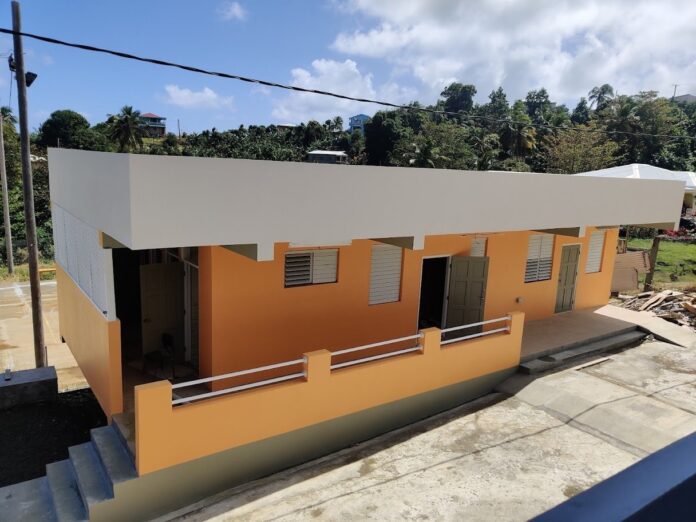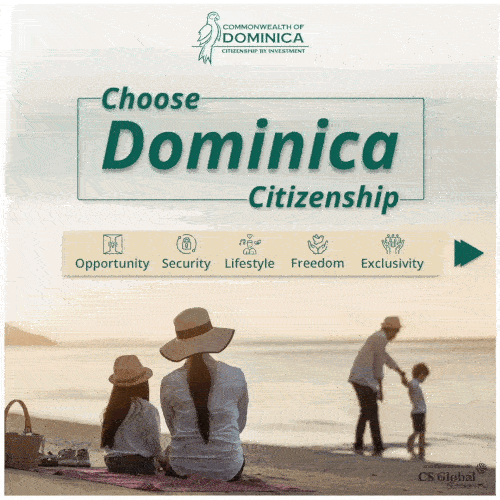Three primary schools were commissioned in Dominica the previous weekend with new modern education technology, climate-resilient infrastructure, and an advanced learning environment. The three schools are – Morne Jaune Primary School, Stevens Primary School, and Wills Strathmore Stevens Primary.
The reconstruction of the educational institutions is being done as a part of the Climate Resilience and Restoration Project – an initiative of the Dominican government. These schools are now equipped with – modern learning techniques, including an auditorium, computer lab, library, kitchen, cafeteria, guidance & counselling room, as well as washroom facilities.
At the present time, the key focus of the Dominican government remains at to develop the climate-resilient infrastructure, which will move the Caribbean island closer in achieving its target of becoming the world’s first-ever climate-resilient nation. The vow was taken by Prime Minister Dr Roosevelt Skerrit after Hurricane Maria in 2017 hit the island country.
The natural disaster damaged nearly 90% of Dominica’s infrastructure and left thousands of people homeless.
The funding for the project is being provided by the Canadian administration and via Caribbean Development Bank (CDB).

Prime Minister of Dominica, Dr Roosevelt Skerrit, stated that the government continues to invest in the education sector as students are the country’s future.
Octavia Alfred- Dominica’s Minister of Education, Human Resource, Planning, Vocational Training, and National Excellence, stated that these newly structured schools represent new opportunities for students. She referred to the government’s efforts to transform the education sector as a “new philosophy of schooling”.
Besides this, the prestigious Dominica Grammar School is also undergoing a facelift, and the renovation is expected to be complete by 2024. Established in 1893, one of the oldest educational establishments on the island.
Dominica’s government continues to prioritise education, which has attracted foreign investors wanting to invest in their own and their children’s futures.
However, the government of Dominica has also been focusing on keeping the beauty of the Caribbean country intact under the Dominica Climate Resilience and Restoration Project. The country is moving on the roadmap to becoming the world’s first-ever climate-resilient country at a perfect pace.
The projects carried out by the nation have been constructed by keeping the environment in mind.
The government of Dominica has been working to build a climate-resilient country since 2018 after the country was hit by a category five hurricane – Hurricane Maria. The Caribbean country commenced its recovery journey by establishing the National Resilience Development Strategy 2030. The main objective of the strategy is to examine the overall policy framework of the government. It also underscores 43 resilience goals.
Later, the government formed Climate Resilience and Recovery Plan (CRRP). It was developed under the leadership of the Climate Resilience Execution Agency for Dominica (CREAD), a mandate under the Climate Resilience Act 2018.
The government of Dominica has planned to achieve the Climate Resilience Targets by 2030.
The Caribbean country has been witnessing many projects focusing on climate resilience. These projects include – the construction of a geothermal power plant and an International Airport, as well as the rehabilitation of houses and schools. Dominica’s government continues to prioritise education, which has attracted foreign investors wanting to invest in their own and their children’s futures.
The majority of the projects are either fully or partially funded by the Citizenship by Investment Programme (CBI).
The CBI Programme of Dominica was established in 1993 and is known as one of the fastest, longest-running CBI programmes worldwide.
Interested investors can apply for the alternative citizenship of Dominica by making a financial contribution to a government-authorised fund and real estate.
The investment can be made by donating towards development projects in both private as well as public sectors, or the investor may also invest in government-approved real estate.
Economic Diversification Fund (EDF) – An individual can invest in the development of the country through the EDF. The funds generated through this medium are utilised in constructing schools, hospitals, and homes and uplifting the sectors like tourism as well as agriculture.
Real Estate Investment – The investor may also apply for the alternative citizenship of Dominica by investing in government-approved real estate – hotels, spas, and villas.
The Citizenship by Investment Programme of Dominica has been ranked as the world’s fastest, most secure, and transparent by the Financial Times’ Professional Wealth Management magazine in the CBI Index.
The CBI Programme of Dominica bagged a perfect score for the due-diligence background checks. The procedure is strict, multi-layered, and robust to make sure that the citizenship is attained by the reputed as well as honest investor.

